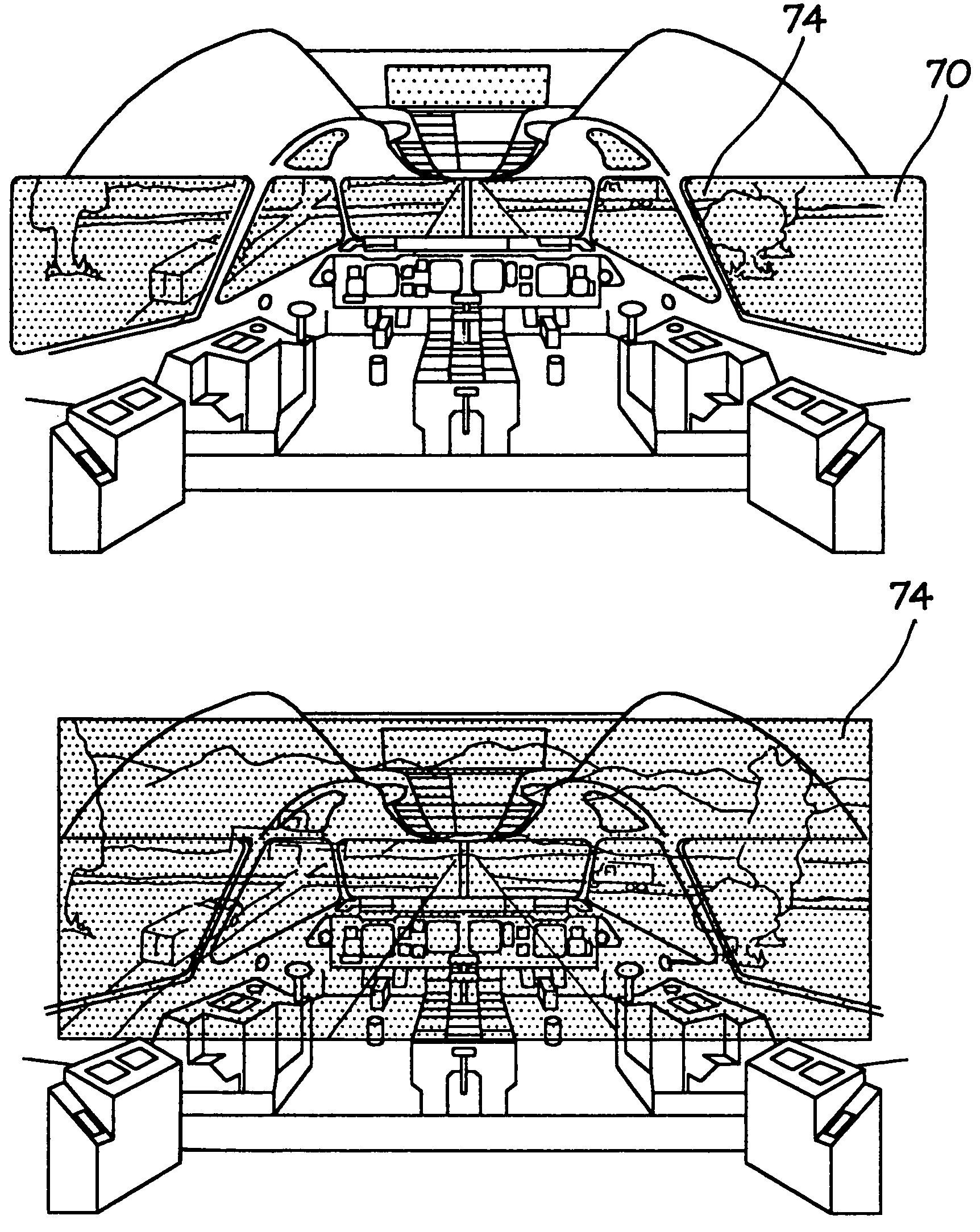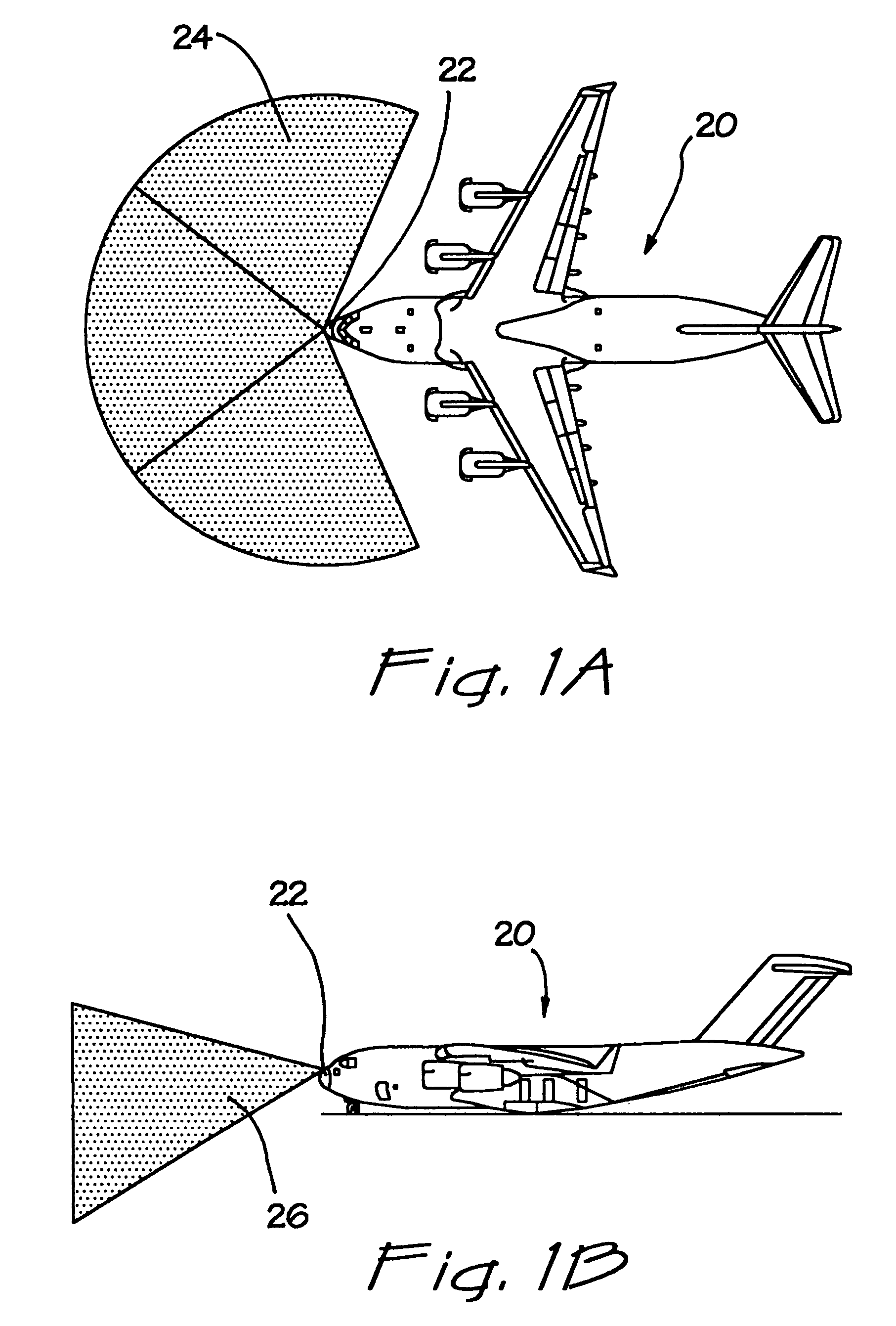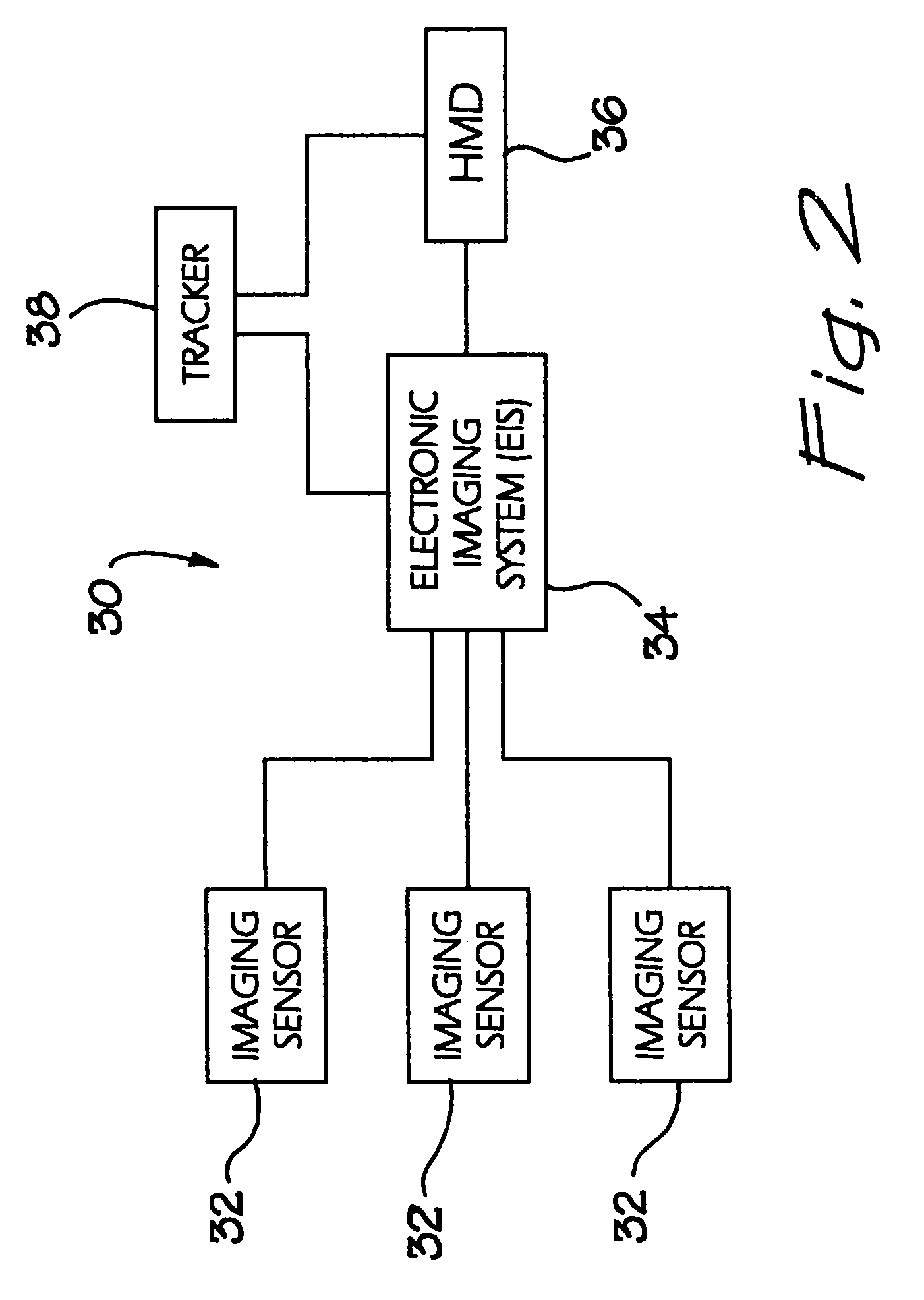Exterior aircraft vision system using a helmet-mounted display
a technology for aircraft and display, applied in the field of external aircraft vision systems, can solve the problems of reducing the reliability and mean time between failures (mtbf) of the system, affecting the navigation of aircraft, and disorienting the turret of the aircraft,
- Summary
- Abstract
- Description
- Claims
- Application Information
AI Technical Summary
Benefits of technology
Problems solved by technology
Method used
Image
Examples
Embodiment Construction
[0023]The present invention provides an enhanced vision system for use in vehicles, in particular aircraft, that increases the safety margin during operations of low visibility. The present system enhances situational awareness and thus increases the margin of safety during reduced visibility and / or low level flight operations, such as take-off / landing, taxiing, approaches, drop zone identification, Short Austere Air Field (SAAF) operations, etc. Although the invention is particularly useful in aircraft, other vehicles that may benefit from system include trucks and automobiles, military vehicles such as tanks, firefighting vehicles, boats and ships, submarines, etc. therefore, it should be understood that the various features of the system may be, with some modification if necessary, transferred from the aircraft environment to other vehicles.
[0024]Additionally, the present enhanced vision system relies on a plurality of fixed or “staring” sensors of various kinds. A particularly u...
PUM
 Login to View More
Login to View More Abstract
Description
Claims
Application Information
 Login to View More
Login to View More - R&D
- Intellectual Property
- Life Sciences
- Materials
- Tech Scout
- Unparalleled Data Quality
- Higher Quality Content
- 60% Fewer Hallucinations
Browse by: Latest US Patents, China's latest patents, Technical Efficacy Thesaurus, Application Domain, Technology Topic, Popular Technical Reports.
© 2025 PatSnap. All rights reserved.Legal|Privacy policy|Modern Slavery Act Transparency Statement|Sitemap|About US| Contact US: help@patsnap.com



